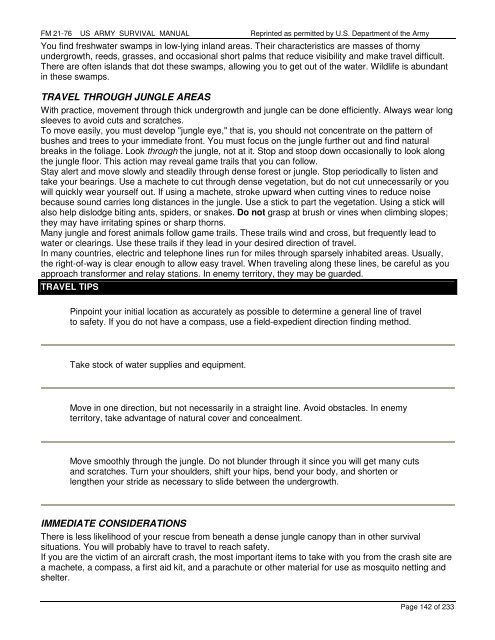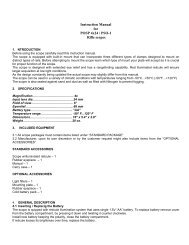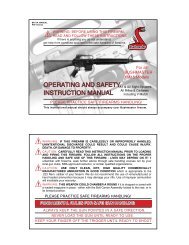FM 21-76 US ARMY SURVIVAL MANUAL - AR15.com
FM 21-76 US ARMY SURVIVAL MANUAL - AR15.com
FM 21-76 US ARMY SURVIVAL MANUAL - AR15.com
Create successful ePaper yourself
Turn your PDF publications into a flip-book with our unique Google optimized e-Paper software.
<strong>FM</strong> <strong>21</strong>-<strong>76</strong> <strong>US</strong> <strong>ARMY</strong> <strong>SURVIVAL</strong> <strong>MANUAL</strong> Reprinted as permitted by U.S. Department of the Army<br />
You find freshwater swamps in low-lying inland areas. Their characteristics are masses of thorny<br />
undergrowth, reeds, grasses, and occasional short palms that reduce visibility and make travel difficult.<br />
There are often islands that dot these swamps, allowing you to get out of the water. Wildlife is abundant<br />
in these swamps.<br />
TRAVEL THROUGH JUNGLE AREAS<br />
With practice, movement through thick undergrowth and jungle can be done efficiently. Always wear long<br />
sleeves to avoid cuts and scratches.<br />
To move easily, you must develop "jungle eye," that is, you should not concentrate on the pattern of<br />
bushes and trees to your immediate front. You must focus on the jungle further out and find natural<br />
breaks in the foliage. Look through the jungle, not at it. Stop and stoop down occasionally to look along<br />
the jungle floor. This action may reveal game trails that you can follow.<br />
Stay alert and move slowly and steadily through dense forest or jungle. Stop periodically to listen and<br />
take your bearings. Use a machete to cut through dense vegetation, but do not cut unnecessarily or you<br />
will quickly wear yourself out. If using a machete, stroke upward when cutting vines to reduce noise<br />
because sound carries long distances in the jungle. Use a stick to part the vegetation. Using a stick will<br />
also help dislodge biting ants, spiders, or snakes. Do not grasp at brush or vines when climbing slopes;<br />
they may have irritating spines or sharp thorns.<br />
Many jungle and forest animals follow game trails. These trails wind and cross, but frequently lead to<br />
water or clearings. Use these trails if they lead in your desired direction of travel.<br />
In many countries, electric and telephone lines run for miles through sparsely inhabited areas. Usually,<br />
the right-of-way is clear enough to allow easy travel. When traveling along these lines, be careful as you<br />
approach transformer and relay stations. In enemy territory, they may be guarded.<br />
TRAVEL TIPS<br />
Pinpoint your initial location as accurately as possible to determine a general line of travel<br />
to safety. If you do not have a compass, use a field-expedient direction finding method.<br />
Take stock of water supplies and equipment.<br />
Move in one direction, but not necessarily in a straight line. Avoid obstacles. In enemy<br />
territory, take advantage of natural cover and concealment.<br />
Move smoothly through the jungle. Do not blunder through it since you will get many cuts<br />
and scratches. Turn your shoulders, shift your hips, bend your body, and shorten or<br />
lengthen your stride as necessary to slide between the undergrowth.<br />
IMMEDIATE CONSIDERATIONS<br />
There is less likelihood of your rescue from beneath a dense jungle canopy than in other survival<br />
situations. You will probably have to travel to reach safety.<br />
If you are the victim of an aircraft crash, the most important items to take with you from the crash site are<br />
a machete, a compass, a first aid kit, and a parachute or other material for use as mosquito netting and<br />
shelter.<br />
Page 142 of 233








